Decorated Houses Help Save a Detroit Neighborhood
Art's a start for an inner-city community working to stave off urban blight and kindle a renaissance
Most of us decorate our front porches and yards only for Halloween, the fall harvest season and Christmas. But these homes in Detroit are decked out 365 days a year, thanks to the efforts of Tyree Guyton, artist and founder of The Heidelberg Project. Instead of being demolished, these mostly abandoned homes in Detroit's oldest African American community are serving a powerful purpose as large canvases for eclectic, eye-catching art — and saving a community.
"Detroit is worth saving. It's a city we all love for different reasons," says Jenenne Whitfield, executive director of The Heidelberg Project. "The art on Heidelberg and Elba streets shows our efforts in restoring the spirit of a city and the hopes of this inner-city community."
She can see how the arts community, urban gardeners and farmers, and tech startups have convinced Detroit natives and others to take back Detroit and revive it from decay. "Residents in neighboring streets are now out sweeping their sidewalks, fixing their broken homes one fixture, one shingle at a time and helping out a neighbor," she says. "We thrived on a manufacturing industry that fell, but we refuse to sit back and let Detroit fade away. We have an obligation to our city."
"Detroit is worth saving. It's a city we all love for different reasons," says Jenenne Whitfield, executive director of The Heidelberg Project. "The art on Heidelberg and Elba streets shows our efforts in restoring the spirit of a city and the hopes of this inner-city community."
She can see how the arts community, urban gardeners and farmers, and tech startups have convinced Detroit natives and others to take back Detroit and revive it from decay. "Residents in neighboring streets are now out sweeping their sidewalks, fixing their broken homes one fixture, one shingle at a time and helping out a neighbor," she says. "We thrived on a manufacturing industry that fell, but we refuse to sit back and let Detroit fade away. We have an obligation to our city."
Visitors to The Heidelberg Project stand on dotted street art with project founder Tyree Guyton (foreground).
"Detroit has always had a race problem, a drug problem, a crime problem," artist Tim Burkesays. "But Tyree was able to do what no government agency has been able to do, which is to bring about dialogue about saving black, inner-city communities. Now people from all over the world come through here." But just a few blocks outside of the arts community is a different story. "No one knows Tim Burke outside of this place," he says. "No one knows who you are if you're not from that street." |
Burke (shown) owns a house on Heidelberg Street that he converted into his studio. "I lived there for 10 years before moving out," he says. As in any inner city, "you have to make smart moves to ensure your safety," he says. "And the plumbing and wiring of that house need a lot of work."
Burke's industrial art fills the exterior of his orange house and the surrounding property. He's usually inside the house creating, maintaining and switching around his works of art or welcoming visitors eager for a peek into his workspace. |
"We feel like there's a major arts and culture movement happening here in Detroit, and we're a huge part of that," she says.
|
Donated stuffed animals swarm the sage green exterior of this home, dubbed The Party Animal House. The name stems from Detroit's overgrown and abandoned lots, similar to urban prairies. "You can see foxes, pheasants and other animals that aren't typically found in city landscapes," says Whitfield.
|
Although on and around Heidelberg you can buy a home for $500, Burke says that the inner city isn't for everybody. "I know that something new has to happen for Detroit to experience the kind of rebirth that people want it to have," he says. "Art's a good start, but it alone isn't the answer."
Learn about The Heidelberg Project here. |


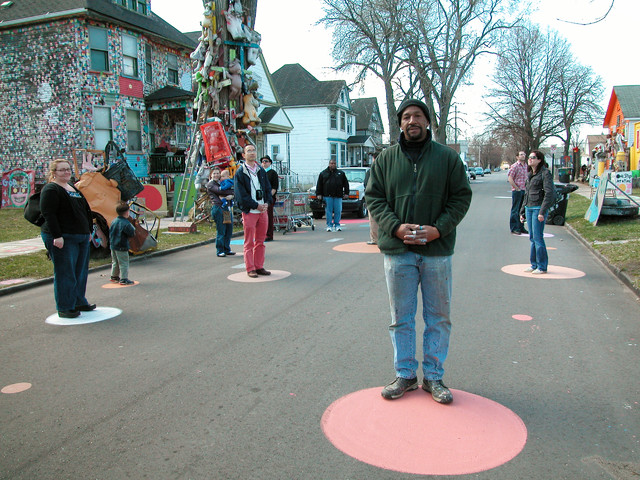
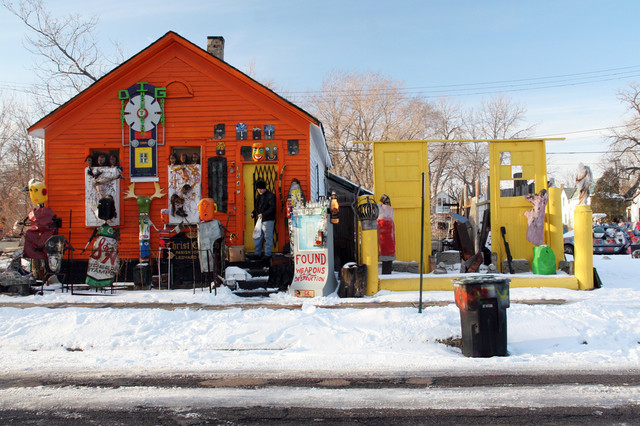
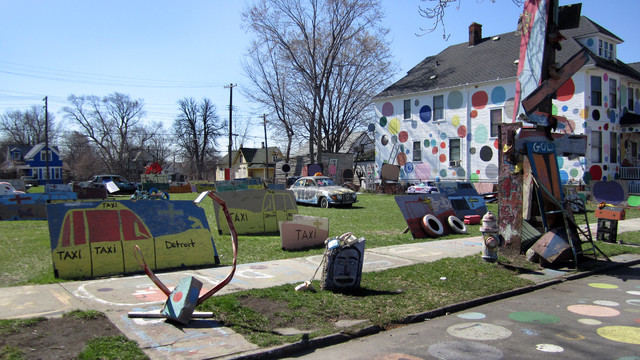
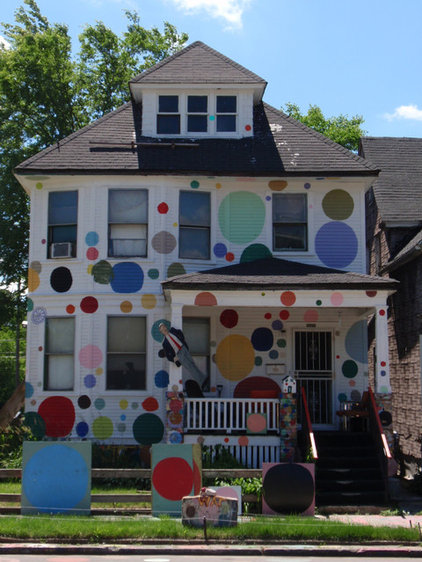
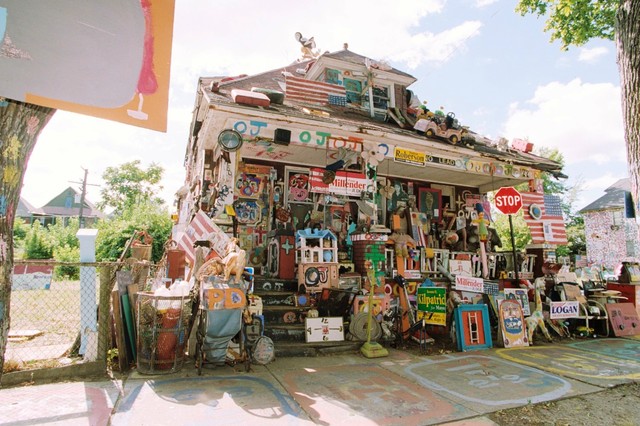
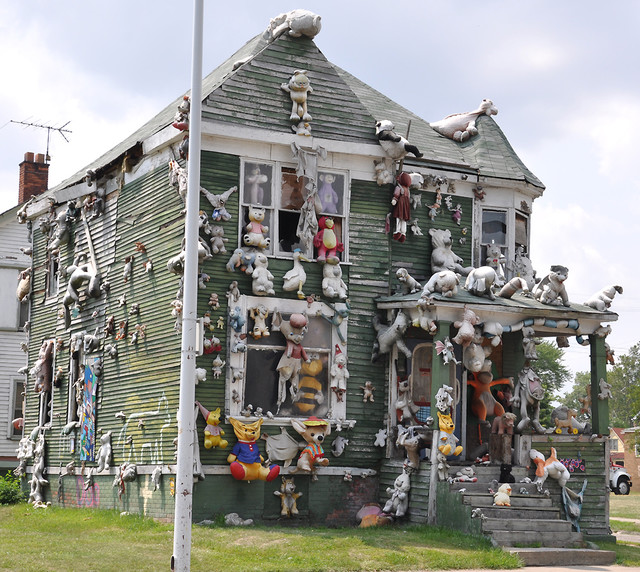

No comments:
Post a Comment